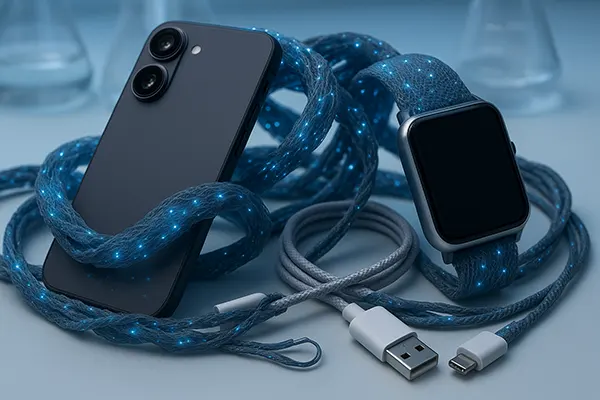Nanotextiles in Tech Accessories: The Future of Durable Gadgets

In 2025, nanotechnology has moved far beyond laboratories and into the daily lives of tech users. From ultra-strong phone cases to self-cleaning cables and intelligent clothing, nanotextiles are redefining the way we think about durability, comfort, and performance in technological accessories. This emerging field merges materials science with innovation to create products that not only last longer but also adapt to human needs in real time.
The Rise of Nanotextiles in Everyday Devices
Nanotextiles are fabrics engineered with nanoscale structures—typically measuring less than 100 nanometres—that provide unique physical and chemical properties. In the field of technology accessories, these materials are applied to create scratch-resistant phone cases, dust-repellent laptop sleeves, and moisture-proof headphone cushions. The ability to modify surface tension and molecular behaviour enables these textiles to resist wear far more effectively than traditional materials.
One of the most popular uses in 2025 is in charging cables. Nanocoatings, such as graphene-based layers, have been introduced to prevent fraying and enhance conductivity. These innovations have significantly extended the lifespan of everyday tech items, making them both eco-friendly and cost-effective for users. This evolution supports the growing movement towards sustainable manufacturing and responsible consumption.
Moreover, nanotechnology has enabled the creation of lightweight, flexible fabrics that retain exceptional strength. This development has given rise to accessories that are not only tougher but also more comfortable to handle, appealing to consumers who prioritise both functionality and design.
Smart Clothing and Wearable Nanotechnology
Smart clothing is one of the most fascinating applications of nanotextiles. The integration of nanosensors into fabric allows garments to monitor vital signs, regulate temperature, and even track muscle performance. In 2025, fitness enthusiasts and medical professionals alike are turning to nanotech wearables for their accuracy and adaptability.
Unlike older smart fabrics, modern nanotextile wearables offer higher precision thanks to nanoscale circuits woven directly into the textile’s structure. These sensors can detect minute physiological changes, providing data that helps in early diagnosis or performance optimisation. As the Internet of Things continues to evolve, such clothing can seamlessly sync with smartphones or smartwatches, creating a complete digital ecosystem around the user.
Another remarkable breakthrough is in antimicrobial properties. Nanoparticles of silver, zinc, or copper embedded within fibres help prevent the growth of bacteria, reducing odours and making fabrics more hygienic. This has become particularly relevant in the post-pandemic era, where health-focused technologies are in constant demand.

Durability, Sustainability, and the Future of Nanotextiles
Durability has always been a key challenge for consumer electronics and their accessories. Nanotextiles offer a solution that goes beyond mere physical strength. By improving molecular bonding and introducing self-healing coatings, these materials can recover from minor abrasions, maintaining their original appearance and performance for years. For manufacturers, this translates into lower replacement rates and greater customer satisfaction.
From an environmental standpoint, the rise of nanotechnology-driven textiles contributes to sustainability in multiple ways. The extended lifespan of accessories means fewer discarded products and reduced electronic waste. Furthermore, new research focuses on biodegradable nanomaterials, ensuring that even high-tech fabrics can eventually return safely to nature without harming the environment.
Looking ahead, experts predict that nanotechnology will play a central role in designing adaptive materials that can change texture or conductivity depending on external conditions. Imagine a phone case that hardens upon impact or a cable that generates power through kinetic motion — these innovations are already under development and are expected to become commercially viable within the next decade.
Challenges and Ethical Considerations in Nanotechnology
Despite its enormous potential, the integration of nanomaterials into everyday items raises important ethical and safety questions. Scientists continue to study the long-term impact of nanoparticles on human health and the environment, ensuring that innovation does not come at a biological cost. Transparency in production and material sourcing remains crucial for maintaining public trust.
Additionally, manufacturers face the challenge of balancing technological advancement with accessibility. High production costs often make nanotech accessories more expensive than standard ones, limiting availability to a broader audience. However, as research funding and industrial adoption grow, prices are expected to decrease, making these technologies mainstream within a few years.
Ultimately, the future of nanotextiles depends on responsible innovation. Collaboration between engineers, designers, and policymakers will be vital in setting standards that protect consumers while fostering creativity. If developed ethically and sustainably, nanotextiles may soon become the backbone of a new era in smart, resilient, and eco-conscious technology.



